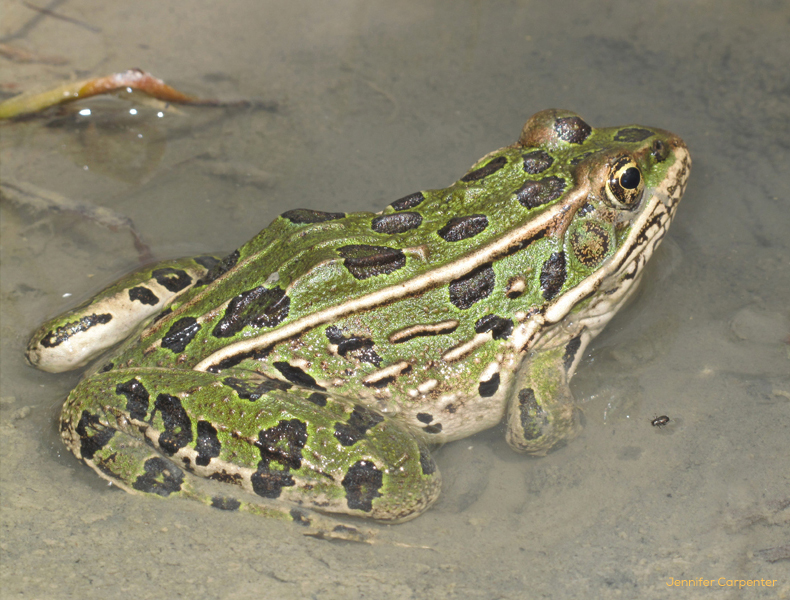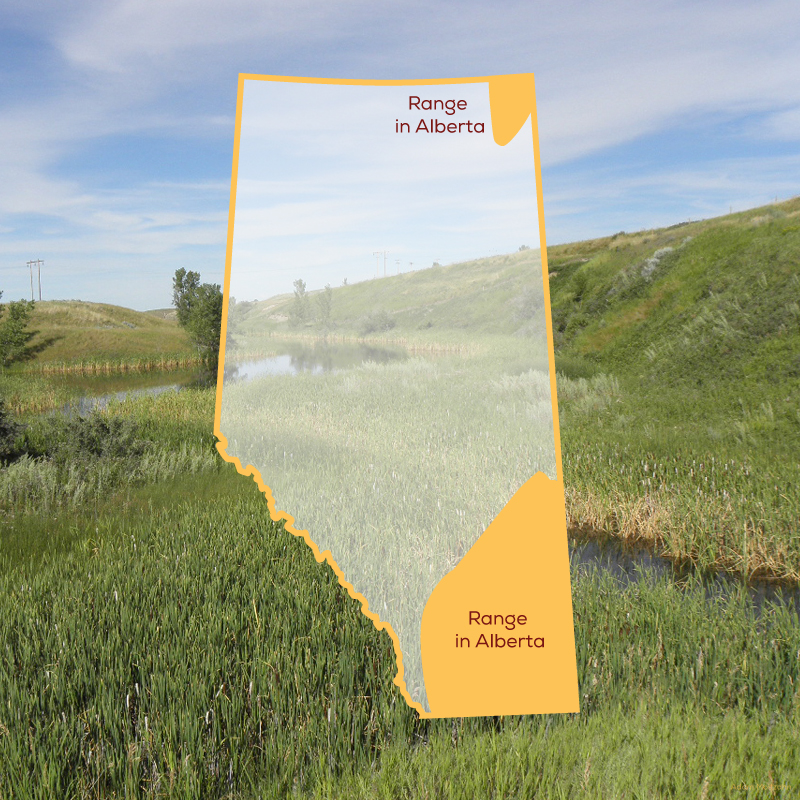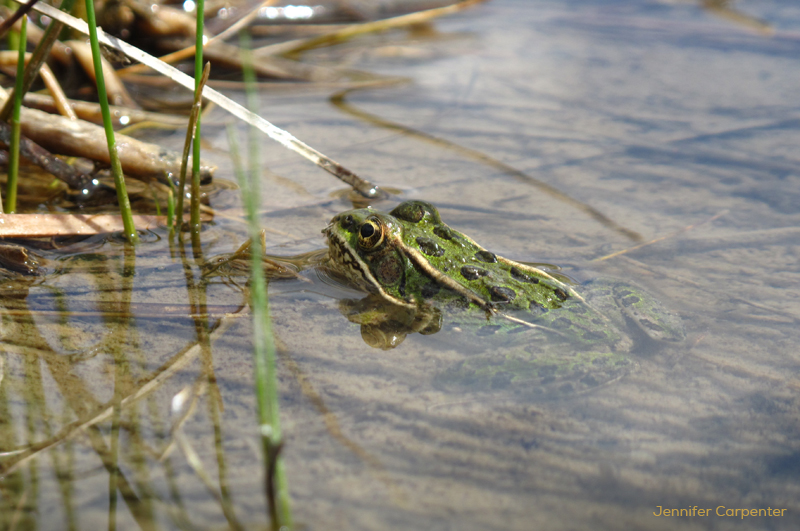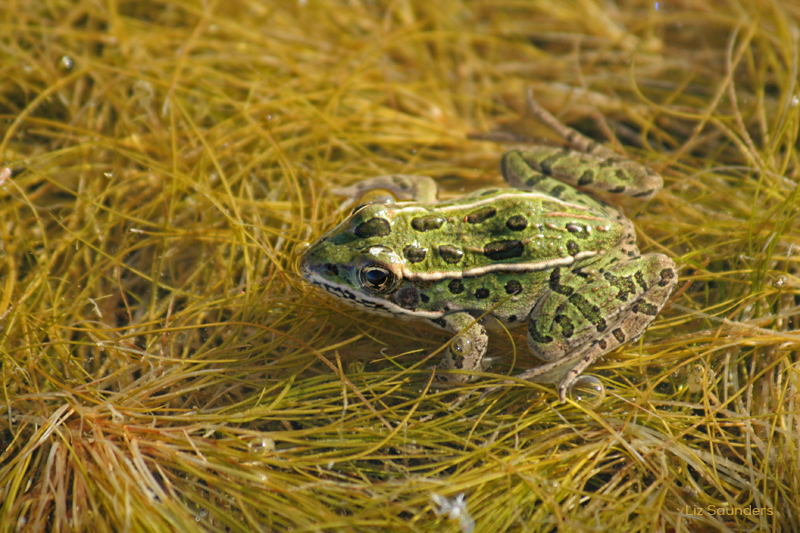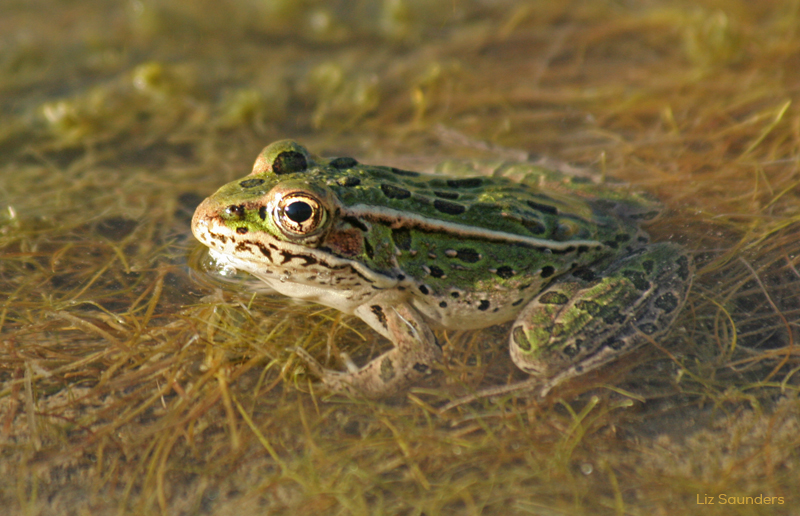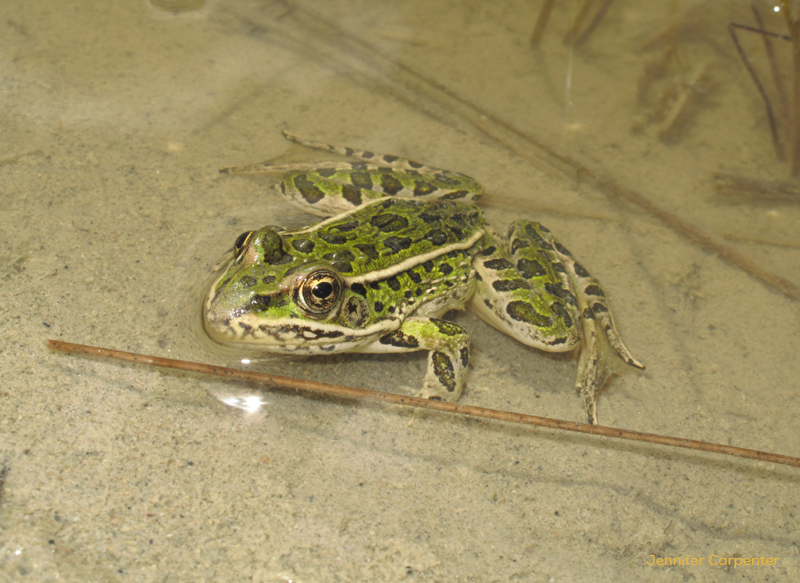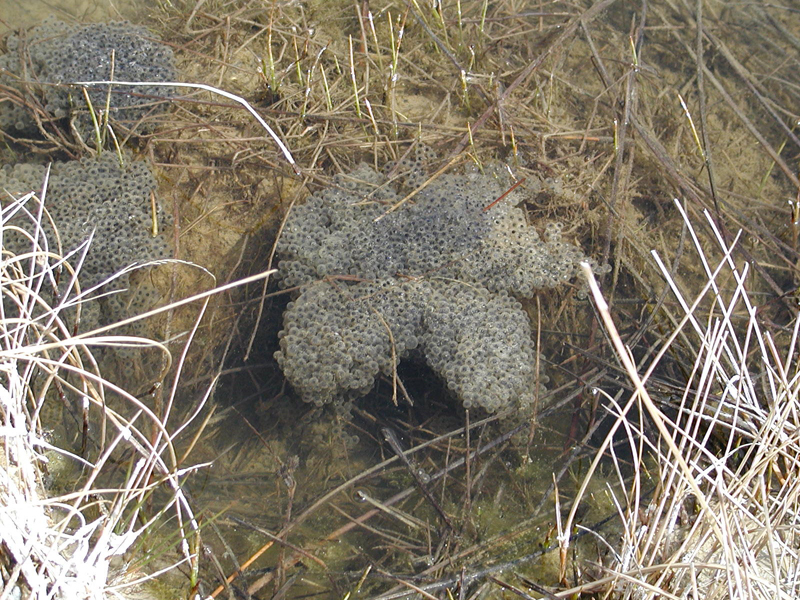Northern Leopard Frog
Lithobates pipiens
Habitat:
Leopard Frogs breed in shallow, clear ponds and marshes and over-winter in springs, streams and ponds that do not freeze to the bottom. They forage in grassy and shrubby areas near water.
A Handful
Leopard Frogs are Alberta’s largest frog – an adult frog would nicely fill the palm of your hand. Their tadpoles can get big too, with some growing as long as 10 cm.
Winters Underwater
Unlike many frogs, Leopard Frogs hibernate in water, at the bottom of ponds, streams or rivers.
A Prairie Canary
Amphibians have thin permeable skin, which allows pollutants from the air and water to be easily absorbed into their bodies, causing physical abnormalities, diseases and death. This makes Leopard Frogs a useful indicator of ecosystem health. Leopard Frogs are especially vulnerable because they spend much of their lifecycle in the water.
Cancer Fighters
Several enzymes, produced in Leopard Frog eggs, have been found to have promising potential as cancer-fighting drugs for both lung and brain tumours in humans.
Frog Song
Male Leopard Frogs sing to attract mates in the spring. Their song sounds a bit like someone slowly rubbing their fingers across an inflated balloon. Others have described it as snoring, rattling and grunting.
Population
Once widespread in Alberta, there was a dramatic decline in Leopard Frog numbers in the late 1970s, leaving only a few small populations in isolated parts of the Province. The exact reason is unknown, but some of the possible causes include decreasing water quality, drought, disease, pesticide use and habitat degradation.
Population surveys in 2000-2001 and again in 2005 show a continued decline in Leopard Frog numbers.
Current Threats
- Draining of wetlands.
- Contamination of water bodies by pesticides and chemical fertilizers.
- Over-grazing and trampling of riparian areas next to creeks and ponds inhabited by Leopard Frogs.
- Introduction of non-native fish which consume eggs and tadpoles.
- Increase in incidence and/or virulence of amphibian diseases.
Species@Risk Quiz
Test your knowledge about Alberta’s grassland species at risk
Northern Leopard Frog
Question 1 |
Pesticides in the water make Leopard Frogs:
More likely to be affected by parasites and disease | |
Ten percent bigger | |
Swim in circles | |
Grow a beard |
Question 2 |
Male Leopard Frogs sound like someone rubbing their fingers along a:
Chalkboard | |
Comb | |
Inflated balloon |
Question 3 |
Northern Leopard Frogs spend their winters:
Hibernating in a burrow | |
In the water at the bottom of a pond, stream or river | |
Frozen into the ice in ponds and creeks |
Question 4 |
The Leopard Frog gets its name from its:
Ability to leap after its prey | |
Cat-like meow | |
Spotted pattern |
Public
- Become a volunteer for the Alberta Volunteer Amphibian Monitoring Program. JOIN NOW!
- Educate yourselves and your family about this species and its role in the ecosystem and take a field trip to a wetland that is home to Leopard Frogs.
- Encourage landowners that are good stewards of the land by purchasing their agricultural products.
Landowners
- If you think or know you have Northern Leopard Frogs on your land, consult with a biologist to identify frog habitats and learn how to balance your operational needs with the habitat needs of the Leopard Frog.
- Use grazing strategies that minimize cattle trampling along the edges of creeks and ponds (e.g. keep cattle away from the water by installing alternative watering options, place salt blocks several hundred meters from water sources).
- Leave at least a 30m buffer of native vegetation around all wetlands to prevent erosion and improve water quality.
- Avoid using pesticides and chemical fertilizers near water bodies.
- Talk to your children and neighbours about the privilege of having these frogs on your land.
- Avoid draining your wetlands.
What MULTISAR Does
- Conducts surveys to find Northern Leopard Frogs and their habitats on participating ranches in the Grassland Natural Region.
- Participates in the Leopard Frog egg re-introduction program.
- Provides information about Leopard Frogs and recommendations to landowners on how to manage land in ways that will protect and enhance their populations and habitats.
- Finds and assists in implementing habitat improvement solutions compatible with agricultural operations.
